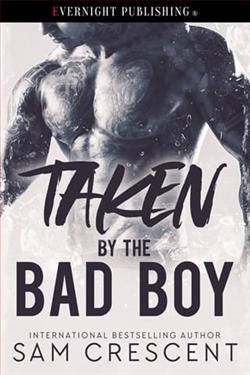Page 116 of T is for Trespass (Kinsey Millhone 20)
The bitch of it was she’d outmaneuvered me again. I’d thought I was so smart and she was already one step ahead of me. Which left me what? My options were now limited, but there had to be a way.
On the way home I stopped at a drugstore and picked up some 400 ASA color film. Then I drove back to my apartment and left my car in a weedy patch in the alleyway behind Henry’s house. I slipped through a gap in the back fence and let myself into my studio. I went upstairs and cleared the surface of the footlocker I use as a bed table, setting the reading lamp, alarm clock, and a big stack of books on the floor. I opened the trunk and took out my 35mm single-lens reflex camera. It wasn’t cutting-edge equipment, but it was all I had. I loaded the film and went down the spiral staircase. Now all I had to find was a vantage point that would allow me to fire off multiple views of my nemesis next door, making certain, at the same time, she didn’t catch sight of me and call the police. Surreptitious picture-taking would certainly qualify as surveillance.
When I told Henry what I was up to, he smiled impishly. “Your timing’s good at any rate. I saw Solana driving off as I was coming back from my walk.”
It was his clever idea to use a flexible silver sunscreen against the windshield of his station wagon, which he insisted on my borrowing. Solana knew my car too well and she’d be watching for me. He went out to the garage and came back with the screen he used to keep the interior temperatures down when he was parked in the sun. He cut a couple of nice round lens-sized holes in the material and handed me the car keys. I tucked the sunscreen under my arm and tossed it on the passenger’s seat before I backed the station wagon out of his garage.
There was still no sign of Solana’s car, though there was a handsome length of curb where she’d been parked earlier. I drove around the block and found a spot across the street, being careful to keep the requisite hundred feet between my person and hers, assuming she stayed where she belonged. Of course, if her parking spot was taken and she pulled her car in behind mine, I’d be jail bait for sure.
I popped open the sunscreen and set it against the windshield, then positioned myself, camera in hand, and zeroed in on Gus’s front door. I shifted my focus to the empty section of curb and adjusted the lens. I slouched down on my spine to wait, watching the front of the house through a narrow gap between the dashboard and the bottom of the screen. Twenty-six minutes later Solana turned the corner onto Albanil, half a block down the street. I watched her reclaim her parking place, probably feeling pleased with herself as she eased the car nose-first into the space. I sat up and braced my arms on the steering wheel as Solana emerged. The click and whir of the camera were soothing as I shot frame after frame. She stopped in her tracks and her head came up.
Uh-oh.
I watched her survey the street, her body language suggesting her hypervigilance. Her gaze swept the block to the corner and then swung back and fixed on Henry’s car. She stood and stared as though she could see me through the sunscreen. I shot six more frames, taking advantage of the moment, and then held my breath, waiting to see if she’d cross the street. I couldn’t very well start the car and drive away without first removing the sunscreen, thus exposing myself to view. Even if I managed that, I’d have to pass right by her and the game would be up.
31 SOLANA
Solana sat in the old man’s kitchen, smoking one of Tiny’s cigarettes, a guilty pleasure she allowed herself on rare occasions when she needed to concentrate. She’d poured herself a tot of vodka to sip while she counted and bundled up the cash she’d amassed. Some was money she’d kept in a savings account, acquired over the years from other jobs. She had $30,000 that had been happily earning interest while she worked in her current position. She’d spent the past week selling off the jewelry she’d collected from Gus as well as her prior clients. Some pieces she’d held for years, worried that the items might have been reported as stolen. She’d run an ad in the classified pages of the local paper, indicating a sale of “estate jewelry,” which sounded hoity-toity and refined. She’d had many calls from the bloodhounds who routinely combed that section, looking for a bargain born of someone else’s desperation. She’d had the jewelry appraised and she’d carefully calculated selling prices that would be tempting without generating questions about how she came by Edwardian and Art Deco diamond rings and bracelets by Cartier. Not that it was anybody’s business, but she’d invented a number of stories: a rich husband who died and left her with nothing but the jewelry he’d given her over the years; a mother who’d smuggled the bracelets and rings out of Germany in 1939; a grandmother who’d fallen on hard times and had no choice but to sell the treasured heirloom necklaces and earrings she’d been given by her own mother years before. People liked sob stories. People paid more for an item with a tragedy attached. These personal accounts of hardship and yearning imbued the rings and bracelets, brooches and pendants, with a value that exceeded the gold content and the stones.











